
Turks and Caicos: An Underwater Dream
Turks and Caicos is home to a plethora of diverse marine life. They can be found living in a range of uniqe excosytems from the shallow, nursery-like mangroves to the mysterious depths of the ocean. The beauty of this underwater world is just a mask and a jump away! In this post, we’ll explore a handful of these majestic creatures that call these waters home.
1. Parrotfish
Parrotfish are some of my favorite to watch whenever I go diving! They’re so colourful that it feels like swimming through a moving rainbow. And let me tell you, they make the most relaxing crunching sound as they munch on coral.
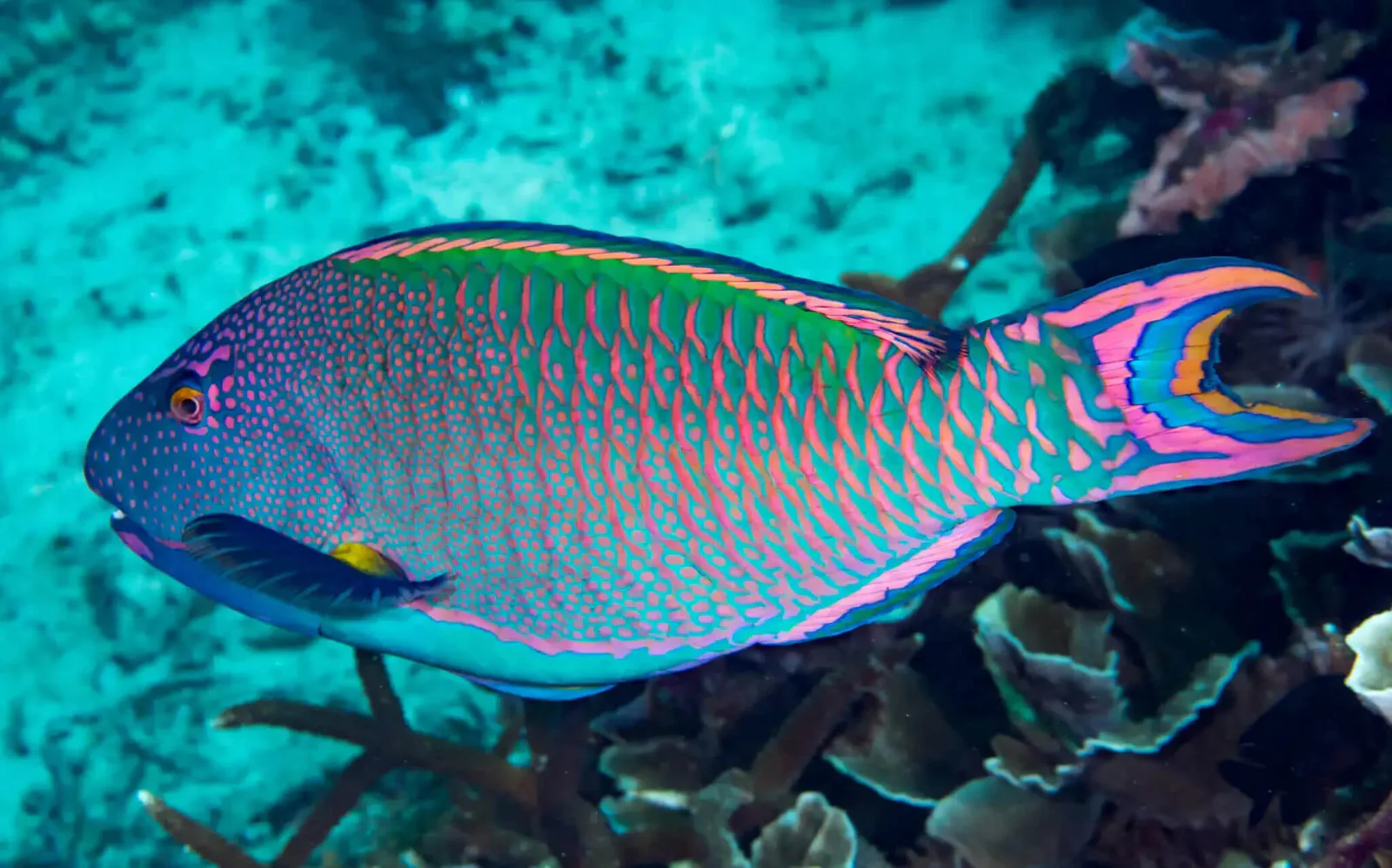
Speaking of which, let me ask you a couple of questions:
Do you enjoy frolicking on the sandy beaches of Turks and Caicos? Maybe you enjoy launching sandballs at your siblings or significant other—because who doesn’t love a good beach battle? Or perhaps you prefer a leisurely stroll along the shore, contemplating life and your next snack?
Well, here’s a fun fact: you can thank the parrotfish for most of that glorious sand you’re playing in!
Now, I couldn't find the exact percentage for the Turks and Caicos, but it’s estimated that up to 70% of beach sand in the Caribbean and Hawaii has made a detour through the digestive systems of parrotfish (NHM, no date). That’s right—those colourful fish are nature's little sand factories!
These fish chow down on algae and coral, using their beaks like a construction crew grinding away at hard coral to get to the tasty stuff. The undigested bits—mostly coral and calcium carbonate—are then excreted as sand (NHM, no date). So, every time you kick back on the beach, just remember: you’re lounging on fish poop!
And yes, I promise that’s the last and only toilet humor joke I’ll make… for now.
2. Humpback Whales
Turks and Caicos is the ultimate hotspot for humpback whale watching! The Atlantic humpback migration is like clockwork, although the number of sightings can change from year to year. If you're looking to catch a glimpse of these magnificent creatures, the sweet spot for sightings is usually from late January to early March. So grab your binoculars and get ready for some whale-sized excitement!
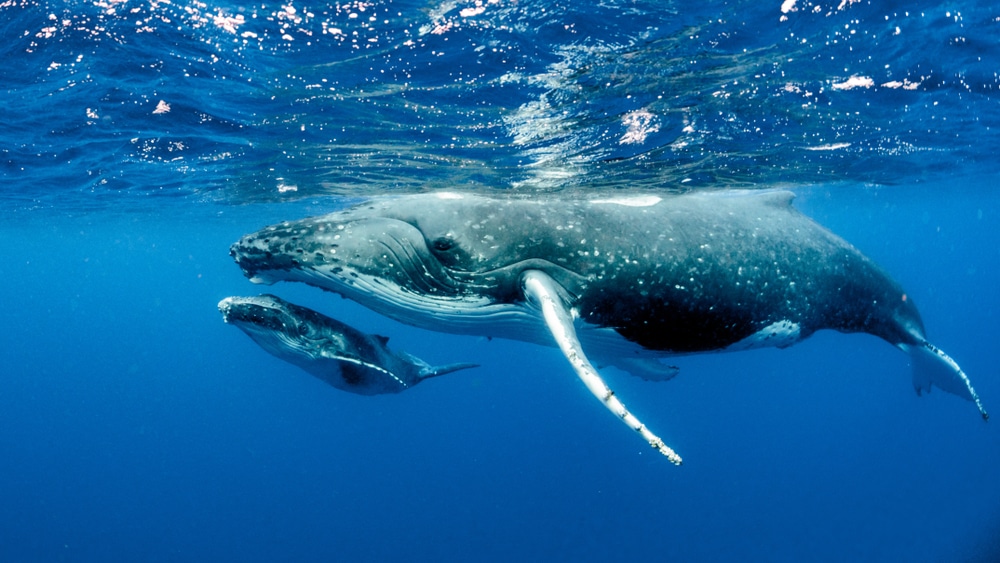
One of the primary reasons humpback whales embark on their long migration from the cooler waters of the northern United States to the warmer waters of the Turks and Caicos Islands is to give birth. As a result, it's common to spot adorable calves during whale watching excursions. In some unforgettable encounters, whales and their calves may linger around snorkelers for over an hour!
For the best chances of spotting whales, head to the western coasts of Providenciales and West Caicos. The waters surrounding Northwest Point Marine National Park and West Caicos Marine National Park are known for frequent sightings.
Now just a couple fun facts I found:
Their latin name, Megaptera novaeangliae, translates to "big wing of New England." This refers to their massive pectoral fins, which can reach up to 16 feet in length, as well as their first early sightings off the coast of New England (NatGeo, no date).
Humpback whales are famous for their enchanting songs, which can travel vast distances through the world’s oceans. These intricate sequences of moans, howls, and cries can last for hours. Interestingly, only males produce these songs, and experts believe they either serve to attract females or to signal their presence to other males (NatGeoKids, 2020).
3. Atlantic Blue Tangs
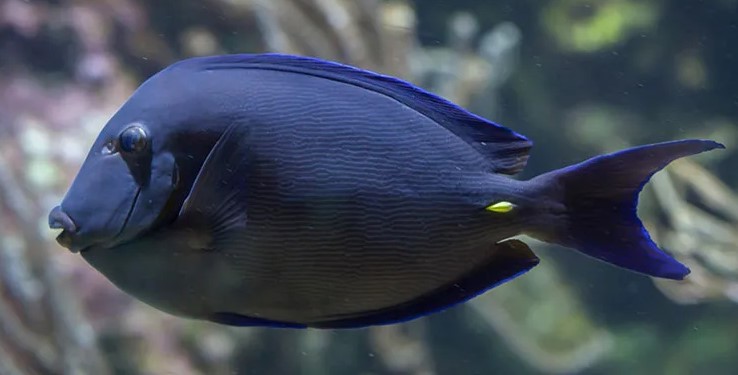
You might feel like you recognize this fish, and if "Dory" from Finding Nemo came to mind, you're not alone—I was told the same thing when I was a kid. While it was nice for young me to think that, it made me overlook the fact that the two species obviously have different scale colour patterns. However, it's not entirely a misconception.
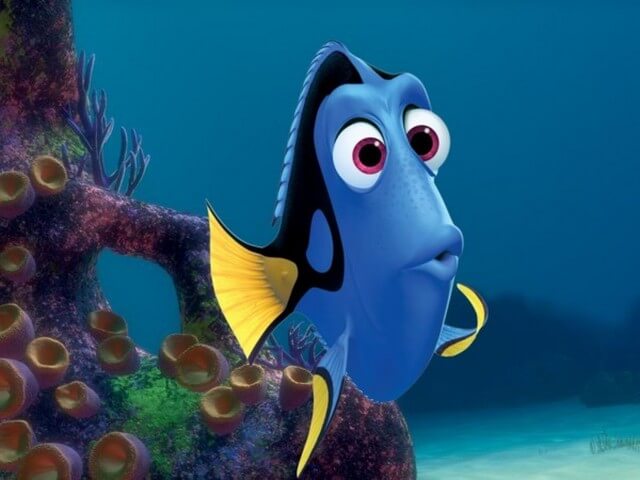
DisneyPixar "Dory"
It turns out that Dory is just a driffert kind of "blue tang"- a Royal blue tang, or Paracanthurus hepatus, a species of Indo-Pacific surgeonfish. The blue tang we have here in Turks and Caicos is the Atlantic blue tang, or Acanthurus coeruleus (Clarke-Bush, 2021). Since everyone casually refers to both as "blue tangs," it's easy to assume these two species are the same.
4. Turtles
There are primarily two types of sea turtles found in the Turks and Caicos. One of the most common is the green sea turtle, while the other, frequently spotted, species is the hawksbill turtle.
The Green Sea Turtle
The green sea turtle, scientifically known as Chelonia mydas, is the largest species of hard-shelled sea turtles. Unlike most other sea turtles, it follows a primarily plant-based diet, feeding mainly on seagrass and algae. This unique diet gives the fat in its body a greenish hue, which is actually the origin of its name—not the colour of its shell (NOAA, 2023).
If you're on Providenciales, I highly recommend visiting Coral Gardens or Smith's Reef to see these beautiful creatures up close.
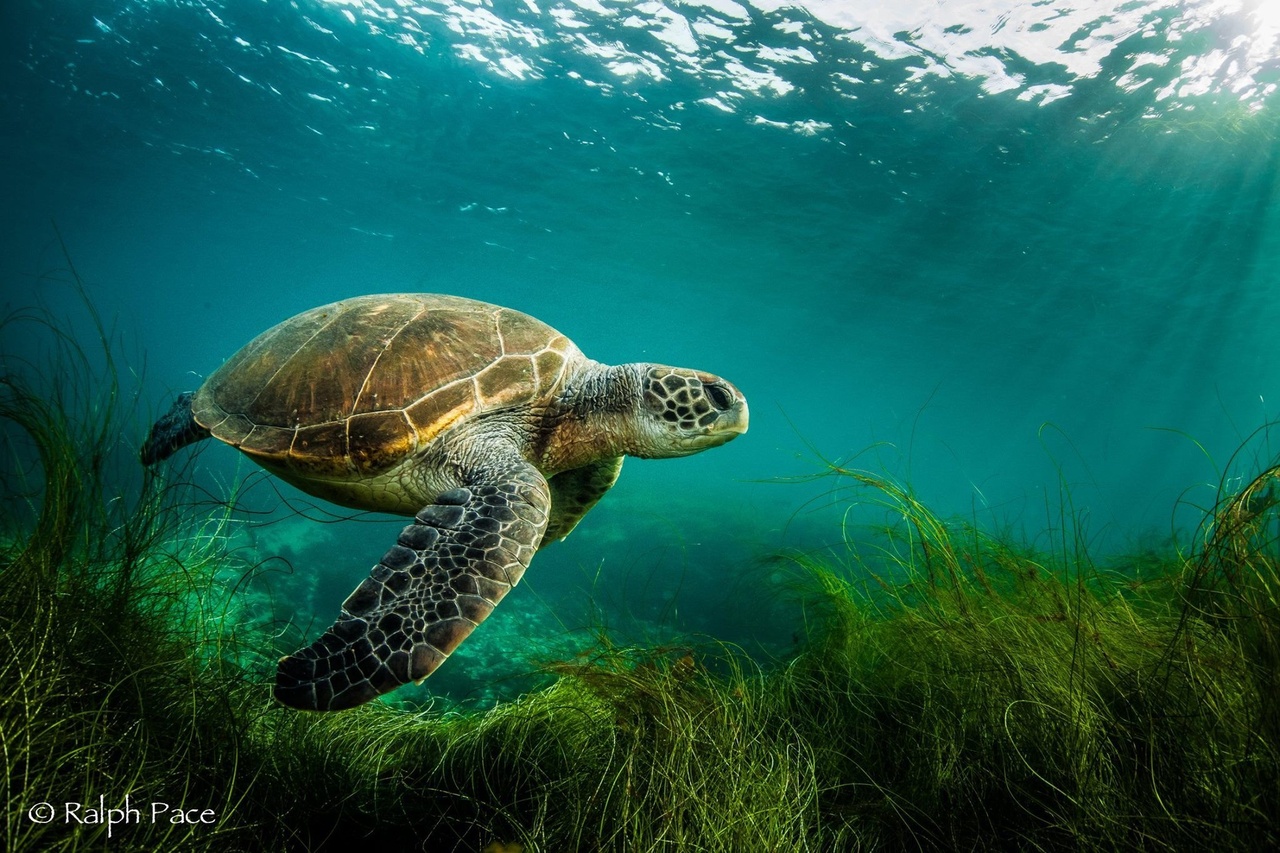
Green Turtle. Photo: Ralph Pace
Oh and If you're a fan of the Disney film Finding Nemo, the green sea turtle may look familiar—it's the species of turtle that "Crush" is based on (PixarWiki, no date).
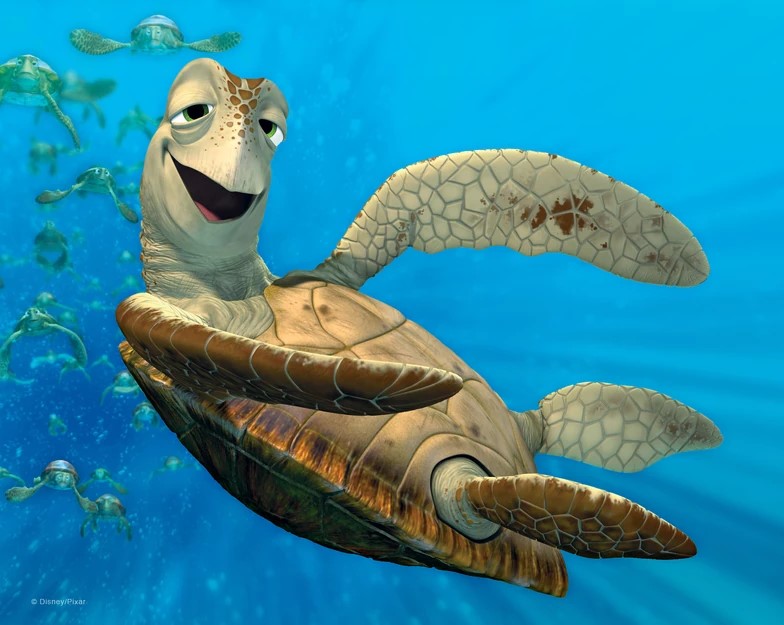
DisneyPixar "Crush"
The Hawksbill Turtle
Hawksbill turtles are named for their narrow, pointed beaks, which help distinguish them from other species. Their shells have a unique pattern of overlapping scales that give the edges a serrated appearance. These turtles primarily feed on sponges, using their sharp beaks to extract them from crevices in coral reefs. In addition to sponges, they also eat sea anemones and jellyfish (WWF, no date).

Hawksbills Turtle. Photo: TAMAR Image Bank
5. Atlantic Bottlenose Dolpins
Did you know that dolphins sleep with one eye open and keep half their brain awake? Talk about multitasking!
Dive into these fun dolphin facts to discover even more amazing secrets about these intelligent creatures!
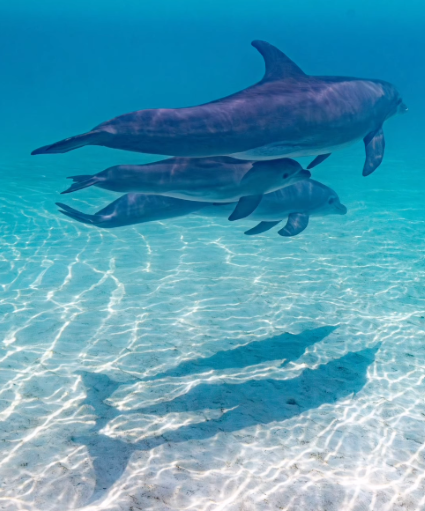
Bo, Luna, and Dreamer
(Listed top to bottom)
Screnshot from video by: @aloha_pablo and @luna_wild_dolphin
6. CORALS - The Barrier Reef
Turks and Caicos boasts one of the best barrier reefs in the world, making it home to one of the finest underwater cities you could ever wish to explore!

Overhead view of the Turks and Caicos barrier reef near False Cut at Northwest Point on Providenciales.
To me, corals are like vibrant apartments for fish, which just so happen to be alive themselves! These colourful structures provide not only shelter but also are the foundation for a thriving ecosystem. Fish like the Atlantic blue tang and parrotfish thrive among the coral reefs, making these underwater habitats their perfect home.
So, what are corals anyway?
Despite their plant-like appearance and tendency to be mistaken for rocks, corals are actually animales. They are a type of translucent marine invertebrate (getting their beautiful colours from algae) and are relatives of jellyfish and anemones (DSW, 2024).
There are two types of corals: hard and soft. Let’s dive in and explore what sets them apart, while discovering some fascinating species from both categories!
Hard Corals
First up, we have hard corals, the architects of the underwater world —and probably what comes to mind when you think of coral! Known as hermatypic corals, these impressive creatures create sturdy exoskeletons made of calcium carbonate, which accumulate over time to form magnificent coral reefs (DSW, 2024).
You’ll find a variety of hard corals in the turks and caicos, including staghorn, elkhorn, pillar, star, and brain corals.
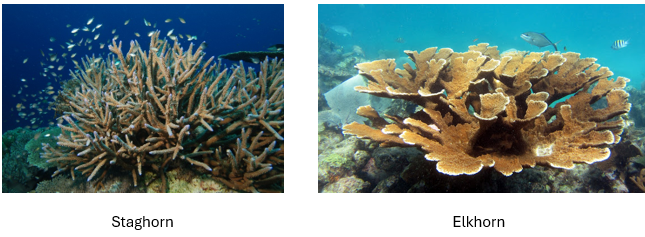
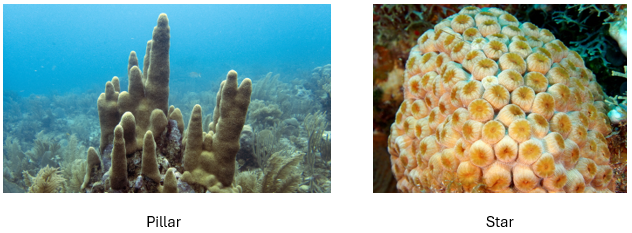
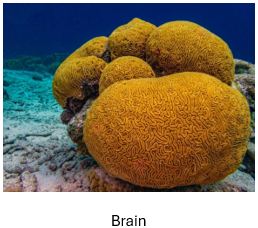
Soft Corals
Soft corals are also made up of polyps, much like hard corals. However, they don’t produce the calcium carbonate skeletons that build massive reefs. Instead, soft corals typically live independently, often finding a home among the reefs created by other species.
On the softer side, the ocean is adorned with beautiful sea fans, sea whips, and sea plumes, creating a mesmerizing tapestry of life beneath the waves.
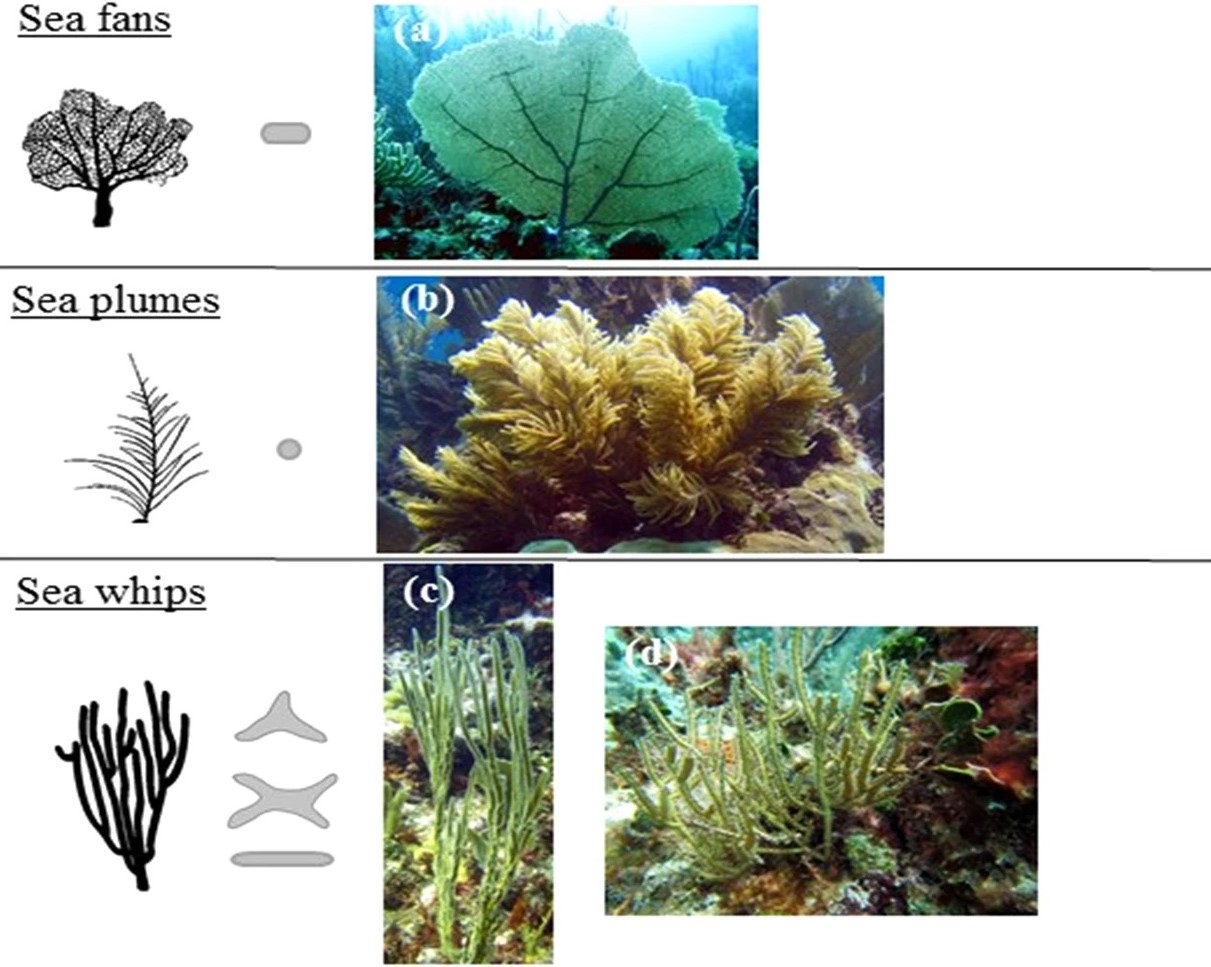
Don’t know how to scuba dive? No problem! Snorkeling is an awesome way to explore our beautiful reefs. Book a trip with us at Aqua Charters, and you’ll be all set for an adventure!
If you’re eager to go scuba diving and get up close and personal with the coral wall, I highly recommend Big Blue Unlimited. They certified me, so I might be a bit partial to them, but their expertise and friendly team will ensure an unforgettable experience!
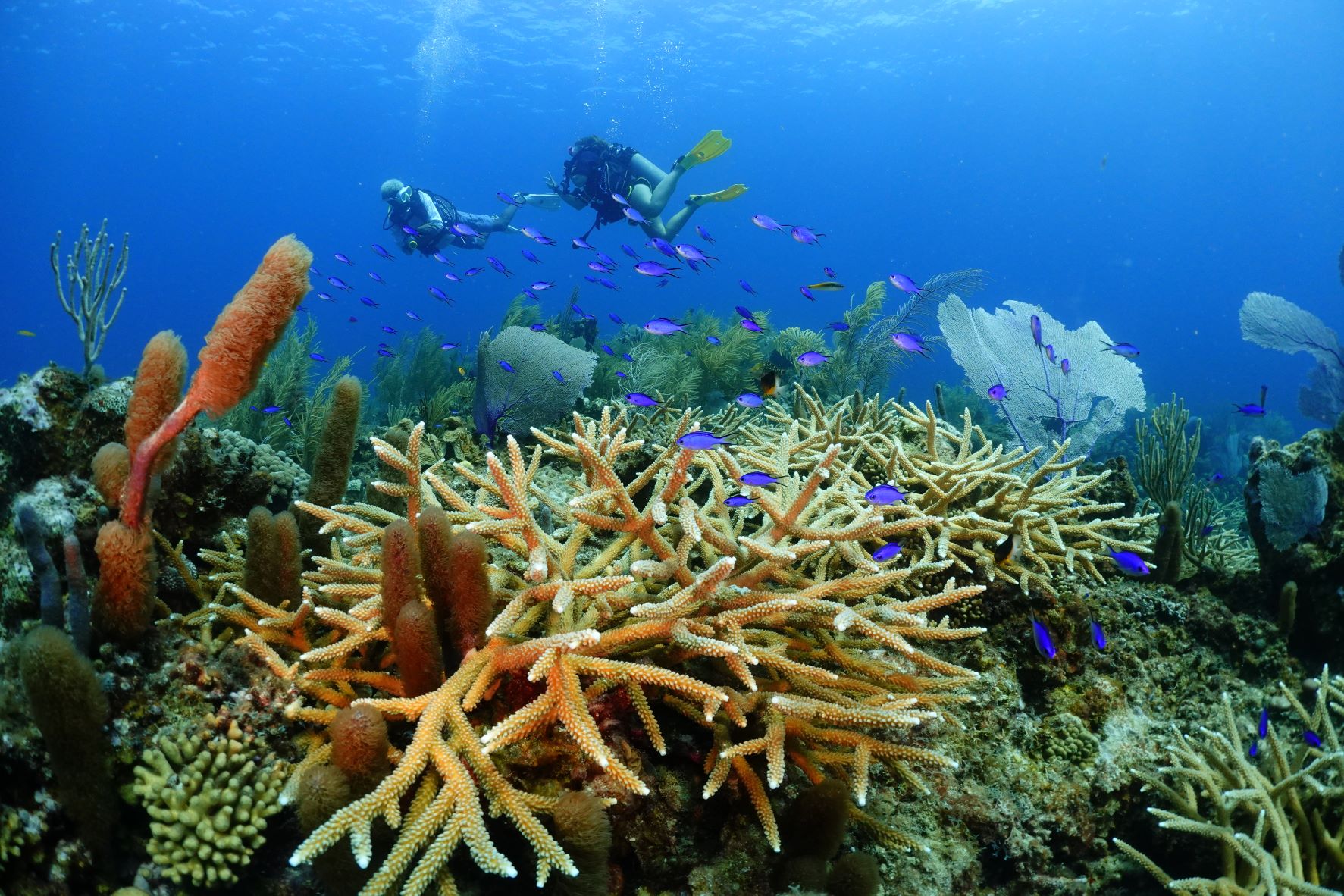
Picture of my sister and I diving in Salt Cay
Conclusion
Whether it's the reef-building hard corals or the flowing soft corals, these incredible organisms form the foundation of the marine ecosystems here in Turks and Caicos. The vibrant reefs attract a variety of marine life—from the playful Atlantic blue tang and colourful parrotfish to majestic creatures like humpback whales and sea turtles. Each plays a crucial role in this thriving underwater world.
So, the next time you dive or snorkel in our crystal-clear waters, take a moment to appreciate the complex, interconnected ecosystem around you. By understanding and protecting the corals, fish, turtles, and even whales that call these reefs home, we help ensure future generations can continue to experience the awe and magic of our oceans.

References
Clarke-Bush, J. (2021) Finding dory: Blue tang fact or fiction, PADI Blog - Scuba Diving and Freediving Tips, Dive Travel Insights & More. Available at: https://blog.padi.com/finding-dory-blue-tang-fact-or-fiction/#:~:text=The%20name%20%E2%80%9Cblue%20tang%E2%80%9D%20can,as%20the%20Atlantic%20blue%20tang. (Accessed: 24 September 2024).
DSW (2024) ‘Exploring the Different Species of Coral’, Deep Sea World, 2 August. Available at: https://www.deepseaworld.com/blog/exploring-the-different-species-of-coral/ (Accessed: 24 September 2024).
NatGeo (no date) Humpback Whale, facts and photos, National geographic. Available at: https://www.nationalgeographic.com/animals/mammals/facts/humpback-whale (Accessed: 23 September 2024).
NatGeoKids (2020) Humpback Whale Facts!, National Geographic Kids. Available at: https://www.natgeokids.com/uk/discover/animals/sea-life/humpback-song/ (Accessed: 24 September 2024).
NHM (no date) The unusual link between parrotfish and sand, Natural History Museum. Available at: https://www.nhm.ac.uk/discover/parrotfish-and-sand.html#:~:text=Parrotfish%20are%20able%20to%20produce,through%20the%20guts%20of%20parrotfish. (Accessed: 24 September 2024).
NOAA (2023) Green Turtle, NOAA. Available at: https://www.fisheries.noaa.gov/species/green-turtle/overview (Accessed: 19 September 2024).
PixarWiki (no date) Crush, Pixar Wiki. Available at: https://pixar.fandom.com/wiki/Crush (Accessed: 24 September 2024).
WWF (no date) Hawksbill turtle | sea turtles | species | WWF, World Wildlife Fund. Available at: https://www.worldwildlife.org/species/hawksbill-turtle (Accessed: 23 September 2024).